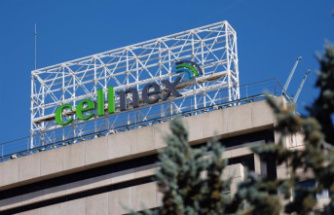OCEAN GROVE -- It was known as "God's Square Mile at the Jersey Shore," a teensy New Jersey beachfront village proclaimed to be the Mecca of American Methodism.
And in the summer of 1897, some 60,000 visitors funneled down Broadway and into Ocean Grove, for the community's annual summer camp meeting -- a 10-day merger of worship and recreation. Among them came a hopeful Manhattan optician named Harry A. Heath, who in his luggage packed a phonograph -- a technology then barely two decades old -- and a few dozen blank wax cylinders on which to record (vinyl wouldn't win the format war for another 15 or so years).
What happened next would alter music and American religious history forever.
Heath carried his machine with the knowledge that above all else, the Ocean Grove meetings were known for their awe-inspiring music events, which emanated from the retreat's Great Auditorium. The venue, built just three years earlier, could hold as many as 10,000 souls standing, and in 1897, the meeting's programming had reached new levels of size. Extra trains were hailed just to shuttle immense choirs from New York down to the Jersey Shore.
As Heath bounced around the meeting, which also welcomed famed hymn writers and star evangelists, what he captured on his phonograph were among the earliest professional gospel recordings ever produced in the United States.
Harry A. Heath, a Manhattan optician who recorded in Ocean Grove in 1897. (Jeff Perkins Collection)These recordings form a large portion of "Waxing The Gospel: Mass Evangelism and The Phonograph, 1890-1900," a three-CD collection and 400-page book of "liner notes" that not only re-illuminates the most devoutly Christian community at the Jersey Shore at the height of its notoriety, but uncovers just how integral the neighborhood was to worldwide gospel music and the advent of its reproduction and distribution.
It's a project that has been greeted rapturously: "Waxing" is nominated for two Grammy Awards Sunday night, for Best Historical Album and Best Liner Notes.
Heath's recordings, "Waxing the Gospel" co-producer Richard Martin describes, are "the stuff that makes the hair stand up on the back of your neck."
Capturing gospel legends
Ocean Grove was founded in 1869 as a post-Civil War Methodist worship camp, a sun-soaked getaway for inland ministers who didn't mind a view to boost their summer work. By 1897, the camp had grown from 20 makeshift tents to several hundred on the burg's north end, just below another booming resort town: Asbury Park. Major newspapers including the Philadelphia Inquirer, Chicago Tribune and New York Herald and World regularly sent reporters to attend these increasingly modernized religious events.
The Ocean Grove auditorium interior (capacity 10,000), where more big events during the annual camp meeting were held. ("Asbury Park and Ocean Grove," 1904)Despite no discernible connection to the camp's inner circles, Heath managed to capture a handful of consummate gospel gems within the Great Auditorium -- including performances by some of the era's most prolific stars, several of whom had rarely or never been audibly recorded otherwise.
Heath recorded the Salvation Army's "Golden Minstrel" Adjt. Edward Taylor singing "Just Tell My Mother," a parody of the gospel staple "Just Tell Them That You Saw Me" -- Taylor's sole recording across an accomplished career, according to Richard Martin.
Heath also recorded the revered Ocean Grove choir leader and composer Prof. John Sweney, warbling wearily to "The Wayside Cross" not long before his death.
On "Waxing the Gospel," a bit of 21st century digital polish makes the recordings quite clear, extraordinary considering the rudimentary equipment.
"You can feel yourself right there as it's going on," Martin said.
Astoundingly, Heath also recorded a poem read by the blind hymn writer Fanny Crosby, who penned more than 8,000 hymns and gospel songs of worldwide renown. To hear the frail orator, 77 at the time, read her poem "Threescore Years and Ten" is the gospel equivalent of uncovering a previously tombed Beatles demo -- a true, jaw-dropping genre treasure.
Striking gold
How these exceedingly rare recordings found their way to the producers of "Waxing the Gospel" is another story entirely -- one part "Antiques Roadshow," one part "CSI: New Jersey."
In the spring of 1993, record collector Michael Devecka unknowingly purchased Heath's trove of records -- 28 cylinders in a pasteboard case -- from an antiques dealer in Andover Township.
Devecka, of Montclair, was surprised by the lot's condition: it was free of the usual mildew the medium acquires over a century of storage, and nearly all the cylinders came with corresponding paper labels, also unusual for that era. One other intriguing clue: Harry Heath's business card also came in the box.
Heath's trove of wax cylinder recordings purchased by Michael Devecka in 1993, left, and the cover of Grammy-nominated "Waxing the Gospel." (Michael Devecka collection and Bobby Olivier)Devecka sat with the records through the '90s and '00s, listening intermittently. A regular collector of very early recordings, he played the Ocean Grove cylinders on his own phonograph and tried to take stock of what exactly he'd bought.
"It sounded like real classical music, being performed properly," Devecka said. "Which led me to believe (Heath) had recorded it live somewhere."
"It wasn't that I was a genius, it was that I was patient," he added. "This is the beginnings of the recording era, it's the pioneers, it's the wagons trains."
Still, it wasn't until 2012 that Devecka finally brought the collection to his friends at Archeophone Records in Illinois for further analysis.
There Richard Martin and company co-owner Meagan Hennessy, who regularly research and produce pre-1925 recordings, delved deeper, and through hours of research and cross-referencing, they were able to confirm that impossible Fanny Crosby recording, despite having never heard her voice before.
It turned out, Martin explains, Crosby's poem "Threescore Years and Ten" was a new passage, first drafted a year earlier in 1896, and the version read in Ocean Grove wasn't the final sketch -- she was still in the editing process. The poem didn't publish anywhere until 1898, therefore it must have been the original author reading it, Martin and Hennessy concluded.
From there, their interest was piqued, and with assistance from colleagues as far out as California poring through century-old gospel and hymn books -- as well as other recordings they'd already acquired elsewhere -- they were able to match the Sweney and Taylor recordings and more.
Waxing the way
The Ocean Grove recordings comprise only about one-fourth of "Waxing The Gospel," released Sept. 30.
Much of the project examines the work of famed evangelists Ira D. Sankey and Dwight L. Moody. The preach-and-song duo traveled together, riled crowds of thousands and provided impassioned sermons and hymns throughout the world. (Think Billy Graham or Joel Osteen, circa the 19th century.)
But will it be enough to score the "Waxing" team a golden gramophone Sunday night? The project faces some stiff competition: "bootleg" recordings from Bob Dylan, the "Music of Morocco," even the album notes for Kris Kristofferson's complete Monument and Columbia albums collection. Still, none of these other nominees expose more wholly the beginnings of an entire genre: the drama and voluminous quality many associate with gospel music today was defined in part at the Ocean Grove meetings.
However now it seems ironic that Ocean Grove was ever considered a place of radicalism. In 2017 the beachfront village is one of New Jersey's great vintage hideaways, despite the economic boom of downtown Asbury Park, less than a football field away across murky Wesley Lake.
The village of 3,300 has seen a population shift over the decades, shown most recently in an influx of LGBT residents over the last 25 years -- something of a spillover from Asbury Park's gay-friendly culture.
But the Auditorium, ornate victorian homes, and summer tents (114 in total) are largely kept period accurate, and the Beersheba -- a freshwater well dug by co-founder Rev. Ellwood Stokes in 1870 and named for a biblical well in Palestine -- still stands. The neighborhood is otherwise dry, and the summer beach doesn't open until noon on Sundays, to avoid interruption with morning "Pavilion Praise" on the boardwalk.
A row of the tent summer homes in Ocean Grove, 2013 file photo. (Alex Remnick/The Star-Ledger)In warm weather, the tents along Pilgrim's Pathway and near narrow streets aptly named for Mounts Zion and Tabor still fill with residents ready to rough it. The Auditorium, anchored by an immense, 11,000-pipe organ, peppers its schedule with sermons and concerts, the latter of which now includes secular acts like The Beach Boys and Tony Bennett.
And like Harry Heath (who died in 1935) and his phonograph experienced, the marriage of worship and warm-weather recreation remains -- albeit in a less showy manner than before.
"It was like walking back in time," Martin said upon his first visit to Ocean Grove. "You could still see it. The different characters still alive in this place: the 'holy, holy' and the light, and wholesome."
"Waxing the Gospel" co-producers Michael Devecka, Meagan Hennessy and Richard Martin in front of the Great Auditorium in Ocean Grove. (Carolyn Devecka)Bobby Olivier may be reached at bolivier@njadvancemedia.com. Follow him on Twitter @BobbyOlivier. Find NJ.com on Facebook.
Our editors found this article on this site using Google and regenerated it for our readers.













